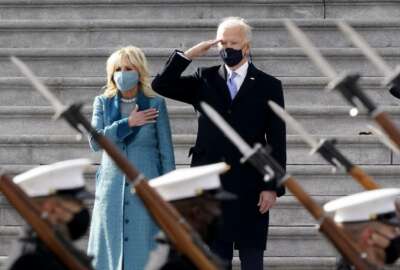
Makeup, nail polish and highlights are now all parts of the modern soldier
The Army is relaxing some standards, however, beards are still a no-go in most situations.
The Army is drastically changing some of its grooming standards and hinting at even more changes when it comes to inclusivity and convenience regarding soldiers’ uniforms in the near future.
Certain hairstyles, jewelry, makeup and other accessories will now be accepted parts of the way soldiers can present themselves. The new changes will become effective near the end of February.
“We’ve been going through all of the regulations to figure out how can we improve the standards and policies that we have to make sure that they are fair and equitable for all soldiers, and so that we can obviously get the best talent in the Army,” Sgt. Maj. Brian Sanders of the Uniform Policy Branch told reporters Tuesday.
The changes are due to a number of factors including the fact that standards were physically harmful to a certain gender, occupation or culture.
For example, the Army will allow women to wear long ponytails instead of putting their hair in tight buns.
“The dermatologists really played a big part in this one,” Sanders said. “It is still professional and neat and it doesn’t impair or impede the proper wear of any Army head gear. From the dermatology perspective, if you look at hair loss, forcing hair into this tight bun leads to more hair loss and to traction alopecia, and a lot of other scarring and medical conditions of the scalp. What we we’re trying to do is get to low risk of hair loss for female soldiers and provide a better quality of life.”
Women also reported migraines and headaches from tight buns.
Sgt. Maj. of the Army Michael Grinston said buns were a readiness issue as well. Women reported buns pushing helmets forward and obstructing eyesight in training exercises.
Anyone else have plans for Tuesday afternoon? pic.twitter.com/mnwPGvWPWy
— Michael A. Grinston (@16thSMA) January 23, 2021
The panel that looked into the grooming standard changes included representatives of twelve Army commands, soldiers from varying ranks, dermatologists, a psychologist, a drill sergeant, a recruiter and other Army representatives.
The Army is also trying to shed some of its stuffiness and allow soldiers to express themselves more in their uniforms.
Women may now wear earrings in non-combat environments. One exception is that pearl earrings may only be worn in a dress capacity.
“We’ve learned some different things that may impact female soldiers in reference to being a female in a masculine Army,” Sanders said. “Our attrition rates for females are higher than males, and as we started looking into those things, we realized that they need to feel like a female and be a soldier at the same time. Earrings help bridge the gap. This can impact individuals who may be feeling depressed because they don’t feel like a female.”
Women soldiers may also wear nail polish and lipstick as long as the colors present a professional appearance and are not “extreme.” Extreme colors include blue, black, gold, white and bright colors.
Men may also wear nail polish as long as it is clear. Sanders said many soldiers who work with hazardous chemicals use nail polish to protect nail deterioration.
Other changes include allowing soldiers to highlight their hair and wear multiple hair styles at once like a twist and lock, as long as it does not impact the wear of uniform or equipment.
Breastfeeding women will also have the option to wear an undershirt if they choose.
The Army is making other changes that will not be in the coming guidance, like adding diacritical accents and hyphens to soldiers’ nameplates, and adding bowties to dress wear.
One point absent from the recommendations that many soldiers were hoping for is permission to grow a beard.
Grinston said that was something that did not come up during this board, however, there are medical and religious exemptions that allow soldiers to grow beards.
That doesn’t mean things won’t change in the future though. Grinston teased possible future changes by tweeting picture of a note on Jan. 23 of Army stationary saying “Beards? Earrings? Pregnancy policy?”
Copyright © 2024 Federal News Network. All rights reserved. This website is not intended for users located within the European Economic Area.
Scott Maucione is a defense reporter for Federal News Network and reports on human capital, workforce and the Defense Department at-large.
Follow @smaucioneWFED





